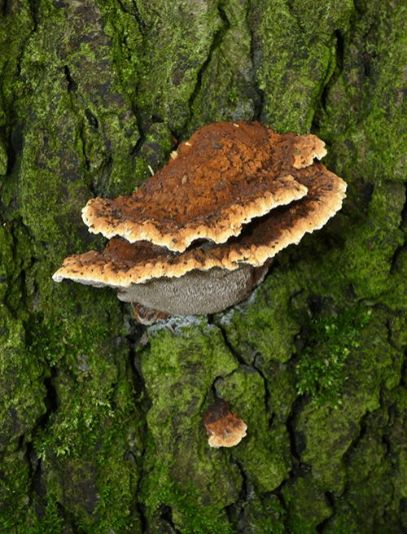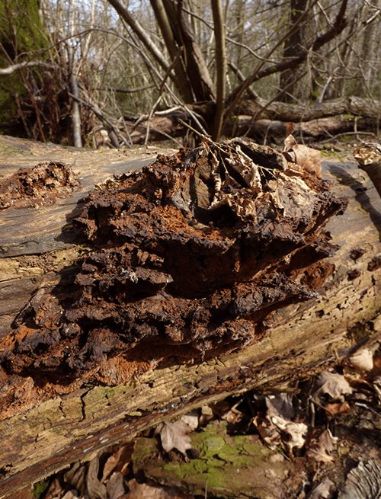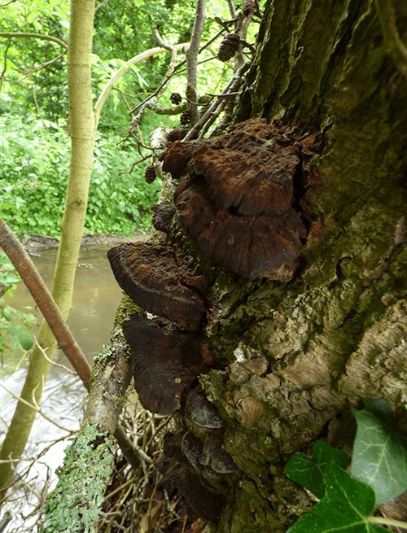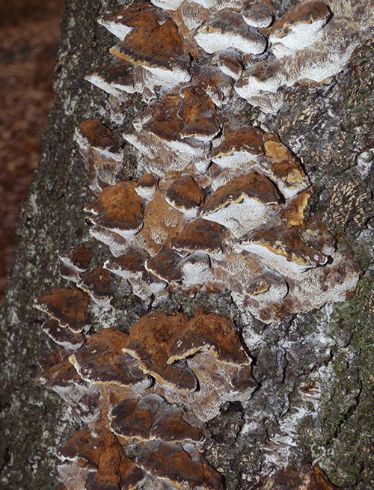Xanthoporia radiata
(Sowerby) Tura, Zmitr., Wasser, Raats & Nevo
Common name
Alder bracket
Often found on
Alder, birch.
Sometimes found on
Gorse.
Location
Growing on the main stem of the host tree and along larger branches – sometimes around wounds or on dead tree parts. Persists on fallen trees / tree parts. Abundant in alder carrs (riparian).
Description
Annual. Usually abundant. Brackets individually small- to medium-sized. Sometimes resupinate. Top surface rimmed white; else a golden orange-brown (photo a). A little hairy. Pore layer golden yellow-white and bruising orange-brown. Blackens-off in autumn. Generally remains attached to the host tree for many years in this state by gradually fragmenting / weathering.
Confused with
Daldinia concentrica (old and fragmented), Inonotus cuticularis (senescent), Inonotus hispidus (senescent).
Significance
No research has been done on its pathogenicity. Usually signifies local dysfunction or systemic physiological decline. May be latently present (endophytic), due to its ability to colonise vast areas on declining and dead trees. Potential to therefore be a weak parasite. Attributed to stem fracture on hosts, periodically – notably for exposed trees.
 Tura- Zmitr.- Wasser- Raats & Nevo AP.jpg)
 Tura- Zmitr.- Wasser- Raats & Nevo B.jpg)
 Tura- Zmitr.- Wasser- Raats & Nevo C.jpg)
 Tura- Zmitr.- Wasser- Raats & Nevo D.jpg)
 Tura- Zmitr.- Wasser- Raats & Nevo E.jpg)




